
Timeline:
1864-c. 1916: Reconstruction and the Great Migration
| 1864 Southern outrage at the North's use of black soldiers flares up in Confederate forces capturing Fort Pillow, Tennessee, and massacring the black troops within; some are burned or buried alive. | ||
| 1864 President Lincoln refuses to sign the Wade-Davis bill, which requires greater assurances of loyalty to the Union from white citizens and reconstructed governments. | ||
| 1865 The Civil War ends on April 26, after the surrender of the Confederate generals Robert E. Lee and J.E. Johnston. | ||
| 1865 Congress establishes the U.S. Bureau of Refugees, Freedmen, and Abandoned Lands to aid four million black Americans in transition from slavery to freedom. | ||
| c. 1866 The states of the former Confederacy pass "black code" laws to replace the social controls removed by the Emancipation Proclamation and the Thirteenth Amendment. | ||
| 1866 The U.S. Army forms black cavalry and infantry regiments. Serving in the West from 1867 to 1896 and fighting Indians on the frontier, they are nicknamed "buffalo soldiers" by the Indians. | ||
| 1866 With the complicity of local civilian authorities and police, rioting whites kill 35 black citizens of New Orleans, Louisiana, and wound more than 100, leading to increased support for vigorous Reconstruction policies. | ||
 | 1867 Howard University, a predominantly black university, is founded in Washington, D.C. It is named for General Oliver Otis Howard, head of the post-Civil War Freedmen's Bureau. | |
| 1868 The 14th Amendment of the Constitution is ratified, guaranteeing equal protection under the law. | ||
| 1868 The South Carolina General Assembly convenes with 85 black and 70 white representatives; a product of Reconstruction, it is the first state legislature with a black majority. | ||
| 1868 Elizabeth Keckley, who rose from slavery in St. Louis, Missouri, to become the modiste and confidante of First Lady Mary Todd Lincoln, publishes her autobiography, Behind the Scenes; or, Thirty Years a Slave and Four Years in the White House. | ||
| 1870 The Colored Methodist Episcopal Church is organized, four years after the first efforts among black members of the Methodist Episcopal Church, South, to develop an independent church. | ||
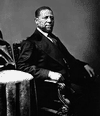 | 1870 Hiram R. Revels of Mississippi takes the former seat of Jefferson Davis in the U.S. Senate, becoming the only African American in the U.S. Congress and the first elected to the Senate. | |
| 1870 Joseph Hayne Rainey is the first African American elected to the U.S. House of Representatives. This congressman from South Carolina will enjoy the longest tenure of any African American during Reconstruction. | ||
 | 1870 The 15th Amendment of the Constitution is ratified, guaranteeing the right to vote regardless of "race, color, or previous condition of servitude." | |
| 1871 Brazil enacts the Law of the Free Womb, which grants freedom to all children born to slaves and effectively condemns slavery to eventual extinction. But immediate and complete abolition is demanded. | ||
| 1872 John R. Lynch, speaker of the Mississippi House of Representatives, is elected to the U.S. Congress. | ||
 | 1877 Reconstruction ends as the last Federal troops are withdrawn from the South. Southern conservatives regain control of their state governments through fraud, violence, and intimidation. | |
| 1879 Author Joel Chandler Harris's story "Tar-Baby," an animal tale told by the character Uncle Remus, popularizes the sticky tar doll figure of black American folktales. It draws on the African trickster tale. | ||
 | 1881 Tuskegee Normal and Industrial Institute in Alabama is founded on July 4 with Booker T. Washington as the school's first president. | |
| 1881 Tennessee becomes the first state to enact Jim Crow legislation, which requires blacks and whites to ride in separate railroad cars. | ||
| 1883 Inventor Jan Ernst Matzeliger patents his shoe-lasting machine that shapes the upper portions of shoes. His invention wins swift acceptance and soon supplants hand methods of production. | ||
| 1887 Florida A&M University is founded as the State Normal (teacher-training) School for Colored Students. | ||
| 1887 Journalist T. Thomas Fortune begins editing the New York Age. His well-known editorials defend the civil rights of African Americans and condemn racial discrimination. | ||
| 1888 On May 13, the princess regent of Brazil (in the absence of the emperor) decrees complete emancipation of some 700,000 slaves without compensation to the owners. | ||
| 1892 The offices of the Memphis Free Speech are destroyed following editorials of part-owner Ida B. Wells denouncing the lynching of three of her friends. | ||
| c. 1895 Cornetist Buddy Bolden, legendary founding father of jazz, leads a band in New Orleans, Louisiana. | ||
| 1895 A merger of three major black Baptist conventions leads to the formation of the National Baptist Convention, U.S.A., Inc., in Atlanta, Georgia. | ||
| 1895 At the Atlanta Exposition, educator Booker T. Washington delivers his "Atlanta Compromise" speech, stressing the importance of vocational education for blacks over social equality or political office. | ||
| 1896 Believing African Americans to be the descendants of the "lost tribes of Israel," Prophet William S. Crowdy founds the Church of God and Saints of Christ. | ||
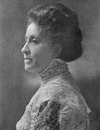 | 1896 Mary Church Terrell becomes the first president of the National Association of Colored Women, working for educational and social reform and an end to racial discrimination. | |
| 1896 In the Plessy v. Ferguson decision the U.S. Supreme Court upholds the doctrine of “separate but equal.” | ||
| 1896 Paul Laurence Dunbar, acclaimed as "the poet laureate of the Negro race," publishes Lyrics of Lowly Life, containing some of the finest verses of his Oak and Ivy and Majors and Minors. | ||
| 1899 Composer and pianist Scott Joplin publishes "The Maple Leaf Rag," one of the most important and popular compositions during the era of ragtime, precursor to jazz. | ||
| c. 1900 Originally a slaves' parody of white ballroom dances, the cakewalk becomes a wildly popular dance among fashionable whites as well as white minstrels working in blackface. | ||
| 1901 Booker T. Washington dines with President Theodore Roosevelt at the White House. The dinner meeting is bitterly criticized by many whites, who view it as a marked departure from racial etiquette. | ||
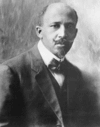 | 1903 W.E.B. Du Bois publishes The Souls of Black Folk, which declares that "the problem of the Twentieth Century is the problem of the color-line," and discusses the dual identity of black Americans. | |
| 1903 In protest to the ideology of Booker T. Washington, W.E.B. Du Bois suggests the concept of the "Talented Tenth"—a college-trained leadership cadre responsible for elevating blacks economically and culturally. | ||
| 1904 Joe Gans, perhaps the greatest fighter in the history of the lightweight division, loses to welterweight champion Joe Walcott in a 20-round draw. | ||
| 1905 The Niagara Movement is founded as a group of black intellectuals from across the nation meet near Niagara Falls, Ontario, Canada, adopting resolutions demanding full equality in American life. | ||
| 1905 Madame C.J. Walker develops and markets a method for straightening curly hair, on her way to becoming the first black female millionaire in the United States. | ||
| 1906 President Theodore Roosevelt orders 167 black infantrymen be given dishonourable discharges because of their conspiracy of silence regarding the shooting death of a white citizen in Brownsville, Texas. | ||
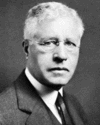 | 1906 After educator John Hope becomes its president, Atlanta Baptist College expands its curriculum and is renamed Morehouse College. | |
| 1907 Black Primitive Baptist congregations formed by emancipated slaves after the Civil War organize the National Primitive Baptist Convention, Inc. | ||
| 1908 In Springfield, Illinois, the home town of Abraham Lincoln, the black community is assaulted by several thousand white citizens and two elderly blacks are lynched. | ||
| 1909 A group of whites shocked by the Springfield riot of 1908 merge with W.E.B. Du Bois's Niagara Movement, forming the National Association for the Advancement of Colored People (NAACP). | ||
| 1910 The Crisis, a monthly magazine published by the NAACP, is founded. W.E.B. Du Bois edits the magazine for its first 24 years. | ||
| c. 1910 Jazz begins to evolve in New Orleans, Louisiana. | ||
| 1911 The National League on Urban Conditions Among Negroes (National Urban League) is formed in New York City with the mission to help migrating African Americans find jobs and housing and adjust to urban life. | ||
| 1911 Anthropologist Franz Boas publishes The Mind of Primitive Man, a series of lectures on culture and race. His work is used often in the 1920s by those opposed to U.S. immigration restrictions based on presumed racial differences. | ||
| 1912 The African National Congress is founded as the South African Native National Congress. | ||
| 1913 Timothy Drew, known as Prophet Noble Drew Ali, founds the Moorish Science Temple of America in Newark, New Jersey. His central teaching is that blacks are of Muslim origin. | ||
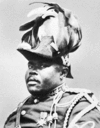 | 1914 The Universal Negro Improvement Association is founded by Marcus Garvey in his homeland of Jamaica to further racial pride and economic self-sufficiency and to establish a black nation in Africa. | |
| 1914 George Washington Carver of the Tuskegee Institute reveals his experiments concerning peanuts and sweet potatoes, popularizing alternative crops and aiding the renewal of depleted land in the South. | ||
| 1915 Historian Carter G. Woodson founds the Association for the Study of Negro Life and History in an attempt to assist the accurate and proper study of African American history. | ||
 | 1915 In Havana Jack Johnson, the first black heavyweight champion of the world, loses the title in 26 rounds to Jess Willard, the last in a succession of "Great White Hopes." Rumours claim he lost to avoid legal difficulties. | |
| 1915 A schism in the National Baptist Convention yields the National Baptist Convention of America, the largest black church in the United States. | ||
| c. 1916 The period known as the Great Migration begins; between 1916 and 1970 some six million African American Southerners migrate to urban centres in the North and West. | ||

| Copyright © 2005 Encyclopædia Britannica, Inc. |